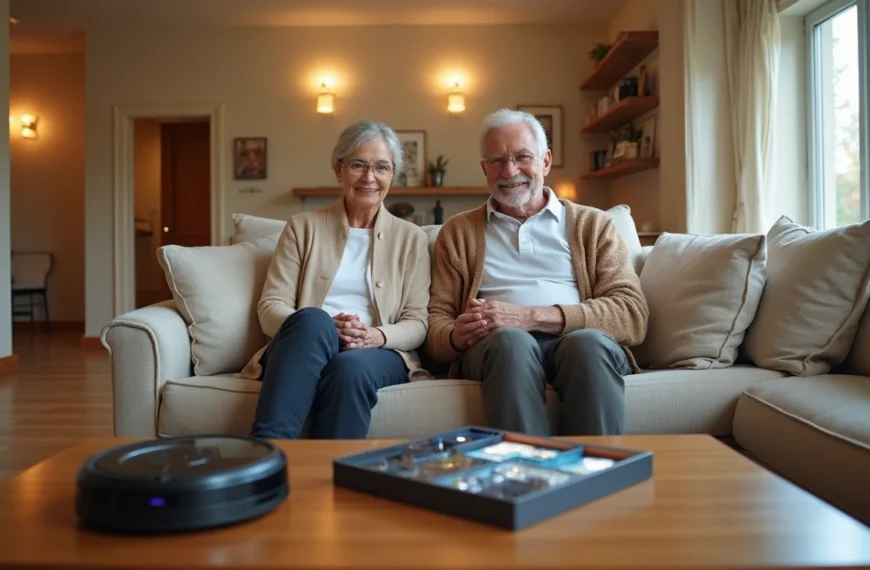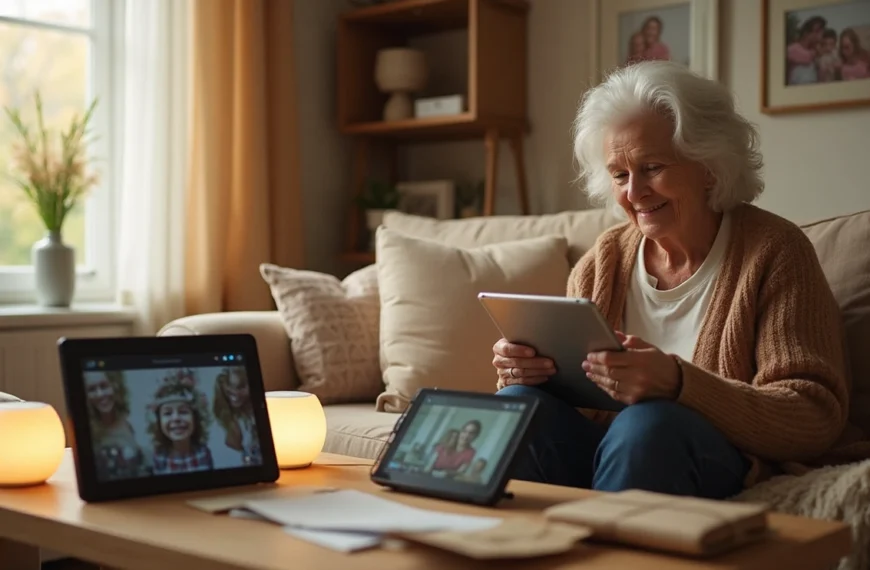Downsizing help for seniors has become more valuable as older adults increasingly choose smaller living spaces. Moving to a smaller home is more than just a new address—it’s a chance to make life simpler, keep what matters most, and start an exciting new chapter.
Retirement gives many seniors the perfect time to think about how they want to spend their days. Downsizing might seem overwhelming at first, but it often turns out to be a smart choice that improves quality of life. The aging population, expensive upkeep of bigger homes, and the appeal of a simpler, more convenient lifestyle drive this trend.
This complete guide gives you the best downsizing tips when you’re ready for a change. You’ll find gentle ways to handle this most important life transition, from practical decluttering tricks like the Four-Box Method to dealing with the emotional challenge of letting go. These strategies will help you turn downsizing into an exciting fresh start, whether health issues make it harder to maintain a large property or you simply love the idea of living with less.
Why Downsizing Can Be the Right Step for Seniors
Image Source: Tutera Senior Living & Health Care
The family home can shift from a comfort zone to a source of stress for many seniors. Making the choice to downsize isn’t about giving up—it’s about creating space to live a life that meets your current needs.
At the time a home becomes too much to manage
Many older adults find their homes no longer work for them and just need constant attention. You might feel overwhelmed if you notice these signs:
- The burden of cleaning and maintaining empty rooms becomes too much
- Simple maintenance tasks like yard work or repairs turn into challenges
- Home maintenance costs eat up more of your monthly budget
- Moving around the house, especially on stairs, isn’t as easy anymore
Your risk of falling goes up by a lot as mobility naturally declines with age. Research shows more than one in four older people falls each year. On top of that, it turns out only 1% of American homes have the five simple universal design features that make a space truly available for seniors.
The benefits of simplifying your space
A smaller home brings immediate practical benefits beyond just less square footage. Your efficient living space can offer:
- Less stress from managing fewer things and less space
- Better safety with fewer hazards and obstacles
- Lower bills for utilities, property taxes, and maintenance
- More time and energy for activities you love instead of household chores
Research proves that crowded spaces can raise stress levels, which hits seniors harder since they might face other pressures. A well-organized, right-sized living space can boost your quality of life tremendously.
Common reasons seniors choose to downsize
Each situation is different, but here are the typical reasons that lead to downsizing:
- Empty nest syndrome—those extra bedrooms sit unused after kids move out
- Financial reality—the average American household spends over 33% of their budget on housing
- Health concerns—the need for more available living arrangements
- Lifestyle choices—wanting the freedom to travel or enjoy hobbies
- Social connections—looking for communities that offer built-in friendships
Even though 77% of people age 50+ say they want to stay in their current home, many later realize that right-sizing can open up more options for comfortable living rather than limit them.
Planning Ahead: The First Step to a Smooth Transition
Downsizing is a major life change that needs careful planning. A clear plan can help reshape what looks overwhelming into a manageable experience toward a simpler lifestyle.
Create a realistic downsizing timeline
Downsizing a family home typically takes six months to a year or longer, based on how much stuff you’ve gathered over time. Starting early before your move gives you several benefits:
- You can make thoughtful decisions instead of quick choices you might regret later
- You’ll have extra time to handle unexpected issues that always come up
- The process becomes less stressful when you break it into smaller steps
A written checklist or calendar with specific deadlines for each phase can help you track progress and keep moving forward through the transition.
Understand your new space and layout
Take time to know your future living space before deciding what to keep or give away:
Accurate floor plans of your new home are vital guides to see what will fit well. You should measure your furniture and sketch a layout to see how your belongings will work in the new space. This planning helps you avoid finding out that favorite pieces don’t fit after moving.
Note that smaller spaces need furniture that serves multiple purposes. Look for pieces that provide storage or adapt to different needs. Your accessibility needs matter too, so keep pathways clear for safe movement.
Involve family or professionals early
Getting help with the emotional aspects of downsizing can make a big difference:
Family members can help both practically and emotionally during sorting. This process gives you a great chance to share stories and memories tied to cherished items.
Professional senior move managers are a great way to get extra support when needed. These experts can build custom plans, help organize and sort, and coordinate donations of items you no longer want.
Decluttering with Purpose: What to Keep, Donate, or Let Go
Image Source: Florida Senior Consulting Advisors
Seniors often find sorting through their lifetime possessions the toughest part of downsizing. Smart strategies can help turn this overwhelming task into a chance to reflect and start fresh.
The Four-Box Method helps you stay on track
The Four-Box Method makes decluttering easier, even when you feel swamped. Start by labeling four containers: Keep, Donate, Storage, and Trash. This system helps you make quick decisions about each item and stops you from creating that “I’ll deal with it later” pile. Your “Keep” box should have items you use often or truly cherish. Put broken or worthless items in the “Trash” box. Good condition items that could help others go in the “Donate” box. The “Storage” box takes care of seasonal items or things that need a proper home.
The One-Year Rule makes decisions easier
The One-Year Rule can guide you through downsizing. Look at each item and ask yourself: “Have I used this in the last year?” If not, you probably won’t need it in your new home. This rule works great for clothes, kitchen gadgets, and hobby materials. The rule becomes extra helpful for seniors moving to independent living communities. You won’t need maintenance tools, bulky exercise equipment, or extra guest bedding in these new spaces.
Dealing with items that hold memories
Emotional items create the biggest challenges during downsizing. Your memories live in your heart and mind—not in physical objects. Taking photographs of special items before letting them go helps preserve memories without taking up space. You might try the “victory lap” method—give special items one last meaningful use before donating them. Family heirlooms might find new life with relatives who would treasure them.
Smart ways to donate or sell
After sorting, you’ll likely have many items ready for new homes. A moving sale could work well if you price items clearly and advertise effectively. Facebook Marketplace offers an easy way to sell items locally if you have leftovers. Many charities welcome donations—some will even pick up bigger items. Check out Charity Navigator to find organizations that match your values.
Emotional Support and Memory Preservation
Image Source: Yahoo Creators
The emotional side of downsizing needs as much attention as sorting through belongings. A senior’s home holds decades of life experiences, making this change about more than just organizing possessions.
Why downsizing can feel overwhelming
Downsizing’s emotional impact often catches seniors off guard. Most older adults have spent decades in their homes, and each room tells countless stories. They naturally laugh and cry as they sort through their belongings. This change usually happens after major life events like losing a spouse, retirement, or watching children move away.
Common emotions during this change include:
- Sadness from leaving a memory-filled space
- Anxiety about new surroundings
- Feeling swamped by endless decisions
- Grief over life changes their possessions represent
Studies show all but one of these seniors experience grief symptoms during downsizing, which includes sadness, poor sleep, and temporary depression.
Ways to honor memories without keeping everything
You don’t need every physical item to keep your memories alive. Here are some helpful approaches:
Photos of meaningful items help maintain connections without the clutter. Digital albums can replace physical photos and save space—a single flash drive holds thousands of pictures. Memory boxes offer a compact solution to store special treasures.
Collections and larger keepsakes can take new forms—like turning quilt scraps into framed artwork. So the memory stays alive in a space-saving way.
Loved ones make the process easier
Family and friends can ease both emotional and physical challenges. Going through possessions together creates chances to share stories and remember good times. Your loved ones also bring fresh viewpoints when you’re deciding what to keep.
You might share heirlooms with family members who’ll treasure them, adding notes about each item’s story. This turns downsizing into a meaningful way to link generations.
Letting go while keeping your identity
Note that your experiences and relationships define you—not your possessions. Research shows most seniors can pick out 20-30 truly special items. The process becomes much easier when you focus on these key pieces.
Take a moment to thank each item for its role in your life before letting it go. This simple act helps release guilt and honors its place in your story.
Conclusion
Seniors face a major life change when they decide to downsize, but the benefits make the challenges worthwhile. The process requires patience since sorting through years of belongings demands both time and emotional strength. A well-laid-out plan can turn this daunting task into smaller, achievable steps toward a simpler life.
Downsizing creates new opportunities for freedom. Many seniors who make this choice experience less stress, lower expenses, and more time to enjoy what they love. They shouldn’t see downsizing as losing their home – it’s a chance to break free from household duties that no longer fit their lifestyle.
The emotional side of downsizing can be tough, but smart strategies help preserve precious memories. Photos, digital albums, and carefully chosen keepsakes maintain connections to special moments without creating clutter. Family members who get involved make the experience richer by sharing stories that strengthen bonds between generations.
The real value of downsizing goes beyond just having less space. It creates room in both mind and heart for new adventures. A smaller, easier-to-manage home lets seniors focus on what counts most now: relationships, hobbies, and personal growth. The process starts with letting go but ends up opening doors to new possibilities and an exciting next chapter in life.
Key Takeaways
Downsizing for seniors isn’t about giving up—it’s about creating space for a more fulfilling lifestyle while reducing stress, costs, and safety risks in an appropriately-sized living environment.
• Start planning 6-12 months ahead with a realistic timeline to avoid rushed decisions and emotional overwhelm • Use the Four-Box Method (Keep, Donate, Storage, Trash) and One-Year Rule to make systematic decluttering decisions • Take photos of sentimental items to preserve memories without keeping physical clutter—your identity lives in experiences, not possessions • Involve family members early for emotional support and practical help while sharing stories about meaningful belongings • Focus on 20-30 core items with exceptional emotional significance rather than trying to keep everything from your past
The emotional journey of downsizing often includes grief-like symptoms, but with proper planning and support, this transition becomes an opportunity for newfound freedom, reduced financial burden, and more energy for activities that truly matter in this life stage.





